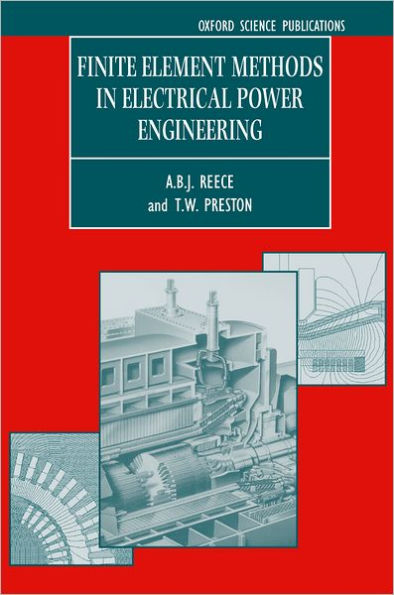Finite Element Methods in Electrical Power Engineering
This book is designed to give the theoretical foundation needed by the new user of finite elements in electrical power engineering, and shows how the equipment designer can benefit from finite element analysis. It is divided into 3 parts; theory, modelling and application of the finite element method. The first section dealing with the theory of finite elements contains all the necessary mathematical formulations to develop the method but is written in a manner to give the reader a physical/engineering understanding behind the technique. The second section deals mainly with modelling aspects, such as the treatment of boundary conditions, end effects, non-linear material and permanent magnets etc. In all cases reference is made to their use in the solution of 'real' engineering problems. Finally, the third part is a collection of problems solved by finite elements including application to turbine generations, d.c. machines, switch reluctance drives, induction motors, transformers, bushing and overhead lines.
"1100536348"
Finite Element Methods in Electrical Power Engineering
This book is designed to give the theoretical foundation needed by the new user of finite elements in electrical power engineering, and shows how the equipment designer can benefit from finite element analysis. It is divided into 3 parts; theory, modelling and application of the finite element method. The first section dealing with the theory of finite elements contains all the necessary mathematical formulations to develop the method but is written in a manner to give the reader a physical/engineering understanding behind the technique. The second section deals mainly with modelling aspects, such as the treatment of boundary conditions, end effects, non-linear material and permanent magnets etc. In all cases reference is made to their use in the solution of 'real' engineering problems. Finally, the third part is a collection of problems solved by finite elements including application to turbine generations, d.c. machines, switch reluctance drives, induction motors, transformers, bushing and overhead lines.
290.0
In Stock
5
1

Finite Element Methods in Electrical Power Engineering
312
Finite Element Methods in Electrical Power Engineering
312Hardcover
$290.00
290.0
In Stock

Product Details
| ISBN-13: | 9780198565048 |
|---|---|
| Publisher: | Oxford University Press |
| Publication date: | 06/22/2000 |
| Series: | Monographs in Electrical and Electronic Engineering , #46 |
| Pages: | 312 |
| Product dimensions: | 6.10(w) x 9.30(h) x 0.90(d) |
From the B&N Reads Blog
